 Libri di Ceruzzi Paul E. su Unilibro.it) Libri di Ceruzzi Paul E. su Unilibro.it)
|
|
1919 |
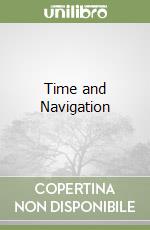 Title :
Time and Navigation
Title :
Time and NavigationAuthor: Johnston Andrew K., Connor Roger D., Stephens Carlene E., Ceruzzi Paul E. Publisher: Smithsonian Inst Pr € 21,30
|
|
|
1918 |
 Title :
Gps
Title :
GpsAuthor: Ceruzzi Paul E. Publisher: Mit Pr € 14,30
|
|
|
1916 |
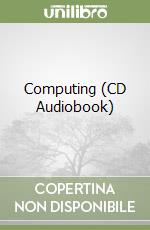 Title :
Computing (CD Audiobook)
Title :
Computing (CD Audiobook)Author: Ceruzzi Paul E., Pabon Timothy Andre (NRT) Publisher: Blackstone Audio Inc € 23,10
|
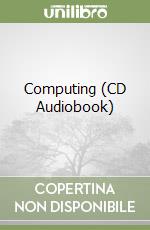 Title :
Computing (CD Audiobook)
Title :
Computing (CD Audiobook)Author: Ceruzzi Paul E., Pabon Timothy Andre (NRT) Publisher: Blackstone Audio Inc € 42,50
|
|
1915 |
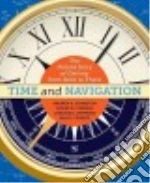 Title :
Time and Navigation
Title :
Time and NavigationAuthor: Johnston Andrew K., Connor Roger D., Stephens Carlene E., Ceruzzi Paul E. Publisher: Smithsonian Inst Pr If you want to know where you are, you need a good clock. The surprising connection between time and place is explored inTime and Navigation: The Untold Story of Getting from Here to There, the companion book to the National Air and Space Museum exhibition of the same name. € 27,70
|
|
|
1912 |
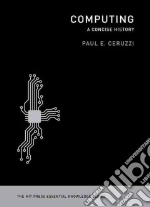 Title :
Computing
Title :
ComputingAuthor: Ceruzzi Paul E. Publisher: Mit Pr The history of computing could be told as the story of hardware and software, or the story of the Internet, or the story of "smart" hand-held devices, with subplots involving IBM, Microsoft, Apple, Facebook, and Twitter. In this concise and accessible account of the invention and development of digital technology, computer historian Paul Ceruzzi offers a broader and more useful perspective. He identifies four major threads that run throughout all of computing's technological development: digitization--the coding of information, computation, and control in binary form, ones and zeros; the convergence of multiple streams of techniques, devices, and machines, yielding more than the sum of their parts; the steady advance of electronic technology, as characterized famously by "Moore's Law"; and the human-machine interface. Ceruzzi guides us through computing history, telling how a Bell Labs mathematician coined the word "digital" in 1942 (to describe a high-speed method of calculating used in anti-aircraft devices), and recounting the development of the punch card (for use in the 1890 U.S. Census). He describes the ENIAC, built for scientific and military applications; the UNIVAC, the first general purpose computer; and ARPANET, the Internet's precursor. Ceruzzi's account traces the world-changing evolution of the computer from a room-size ensemble of machinery to a "minicomputer" to a desktop computer to a pocket-sized smart phone. He describes the development of the silicon chip, which could store ever-increasing amounts of data and enabled ever-decreasing device size. He visits that hotbed of innovation, Silicon Valley, and brings the story up to the present with the Internet, the World Wide Web, and social networking. € 14,30
|
|
|
2006 |
 Title :
Storia dell'informatica
Title :
Storia dell'informaticaAuthor: Ceruzzi Paul E. Publisher: Apogeo Education Questa č una storia dell'informatica "moderna", dagli anni Quaranta del Novecento fino ai giorni nostri - dallo sviluppo dei primi computer elettronici digitali fino agli anni di Internet. Organizzato cronologicamente, il volume segue in particolare cinque momenti di transizione che sono stati punti chiave di snodo: la trasformazione del computer da strumento scientifico a prodotto commerciale, alla fine degli anni Quaranta; l'emergere dei piccoli sistemi alla fine degli anni Sessanta; gli inizi dell'informatica personale negli anni Settanta; la diffusione delle reti dopo il 1985; il complesso periodo 1995-2001. € 28,00
|
|
|
2003 |
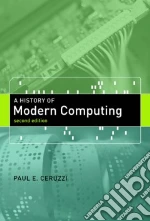 Title :
A History of Modern Computing
Title :
A History of Modern ComputingAuthor: Ceruzzi Paul E. Publisher: Mit Pr This engaging history covers modern computing from the development of the first electronic digital computer through the dot-com crash. The author concentrates on five key moments of transition: the transformation of the computer in the late 1940s from a specialized scientific instrument to a commercial product; the emergence of small systems in the late 1960s; the beginning of personal computing in the 1970s; the spread of networking after 1985; and, in a chapter written for this edition, the period 1995-2001. The new material focuses on the Microsoft antitrust suit, the rise and fall of the dot-coms, and the advent of open source software, particularly Linux.Within the chronological narrative, the book traces several overlapping threads: the evolution of the computer's internal design; the effect of economic trends and the Cold War; the long-term role of IBM as a player and as a target for upstart entrepreneurs; the growth of software from a hidden element to a major character in the story of computing; and the recurring issue of the place of information and computing in a democratic society. The focus is on the United States (though Europe and Japan enter the story at crucial points), on computing per se rather than on applications such as artificial intelligence, and on systems that were sold commercially and installed in quantities. € 31,20
|